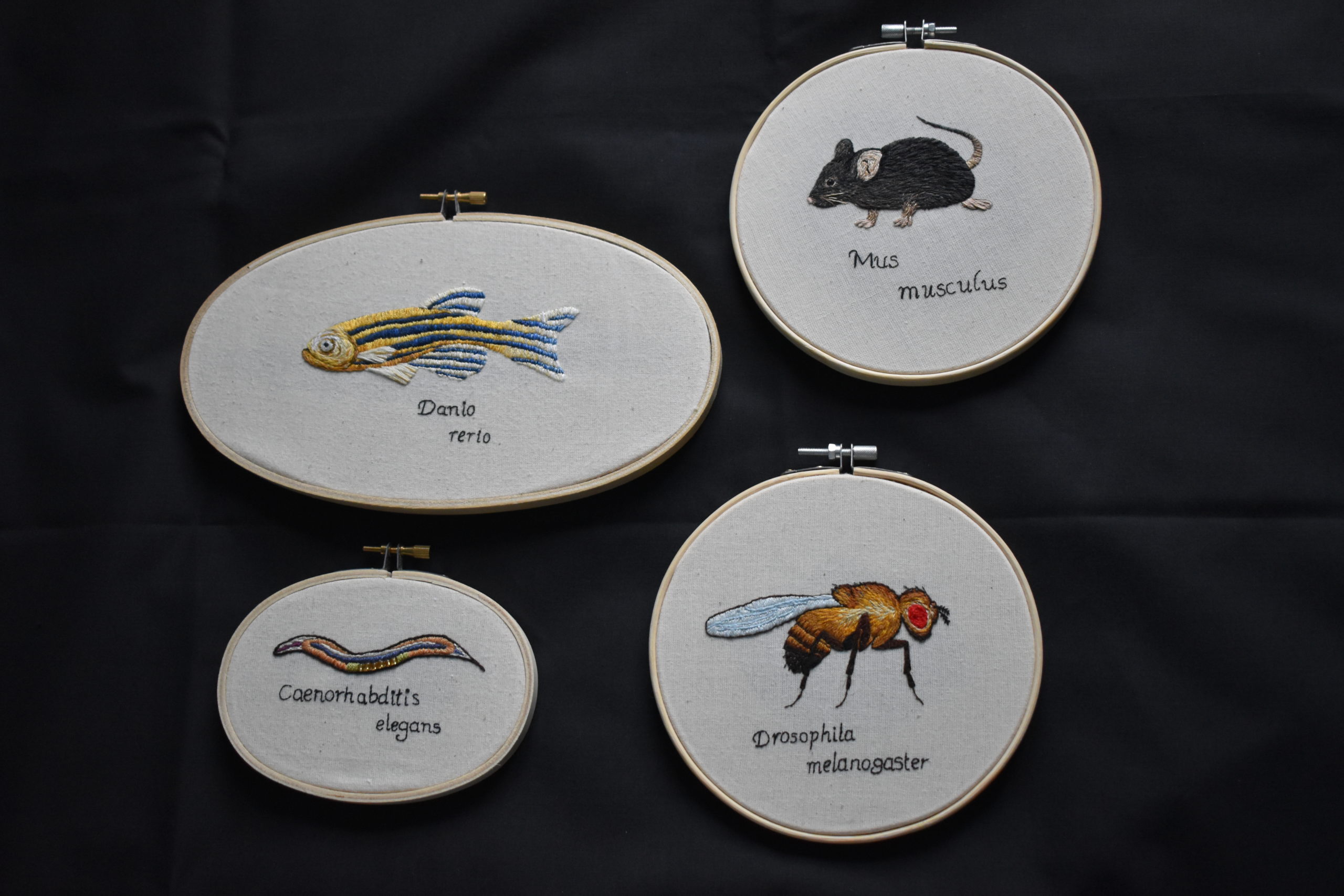11 November 2020
#DrawnToGeoscience: Stitches in the brain
Posted by Shane Hanlon
#DrawnToGeoscience is a series of posts by artists who draw about science and explain their process and inspiration while also showcasing their pieces. Learn more about contributing. This week, Hannah Warming.
I used to love drawing and even painting on occasion but that gradually became eclipsed by my school/college and now university life as I got older. Since I wasn’t effortlessly amazing at drawing, it didn’t seem worth the time when there were much more ‘important’ things to focus on. I went down the STEM pathway in school, studying biology which I had always loved, collecting bugs for inspection from a young age and one of my prized possessions as a child being a miniature microscope. Looking back I think it only had a 10X objective, but still I thought it was brilliant!

Model organisms. Credit: Hannah Warming
Since then I studied Biomedical Science and achieved a Master’s, which led me into my PhD. I’m in my third year now, studying neuroscience looking at stroke and dementia processes on a single-cell level. I record communication between brain cells in my work, using extremely fine needle-like pipettes, which I think must be what led me to needlework in art.
I think there’s something fascinating and almost humorous about creating artwork of the brain, as if my own brain is paying itself a compliment. For example, when I created the Purkinje cell embroidery, my own Purkinje cells were facilitating the fine movement in my hands!
I started embroidery in March 2020, of course encouraged by the national lockdown in the UK meaning I had a lot more time on my hands. I found quickly that it was a perfect medium for representing themes in the brain such as brain cells and their fibrous shapes. Almost 100% of my inspiration comes from either the work I do in the lab, for example my own cultured brain cells or brain slices, or anatomical and microscopic imagery shared online.
Recently I have taken on a number of commissioned artworks and this has been great for inspiration outside of my usual neuroscience, for example a mammary gland duct I created which had beautiful patterns of cells.
One project I am working on is a series of embroidered pieces to honour the model organisms that are used commonly in research, including frogs, mice, and even the C.elegans microscopic worm. Animal usage in science can be a controversial topic but I am really pleased to see some amazing science communication around the subject lately.
My art process is fairly simple – I tend to doodle a design on paper before either drawing straight onto fabric (with heat-erasable pen of course!) or recently I bought a light box which allows me to transfer the designs directly. I learned a few basic stitches and knots and like to play with the texture to convey my ideas, whether that is creating a silky smooth surface, textured fibres or adding beads. The great thing about embroidery is that if your line goes a little wonky you can just re-stitch it!
-Hannah Warming is a PhD student in neuroscience at the University of Southampton. You can find her art on Twitter @NeedlesNeurons and Instagram @Needlesandneurons.




 The Plainspoken Scientist is the science communication blog of AGU’s Sharing Science program. With this blog, we wish to showcase creative and effective science communication via multiple mediums and modes.
The Plainspoken Scientist is the science communication blog of AGU’s Sharing Science program. With this blog, we wish to showcase creative and effective science communication via multiple mediums and modes.